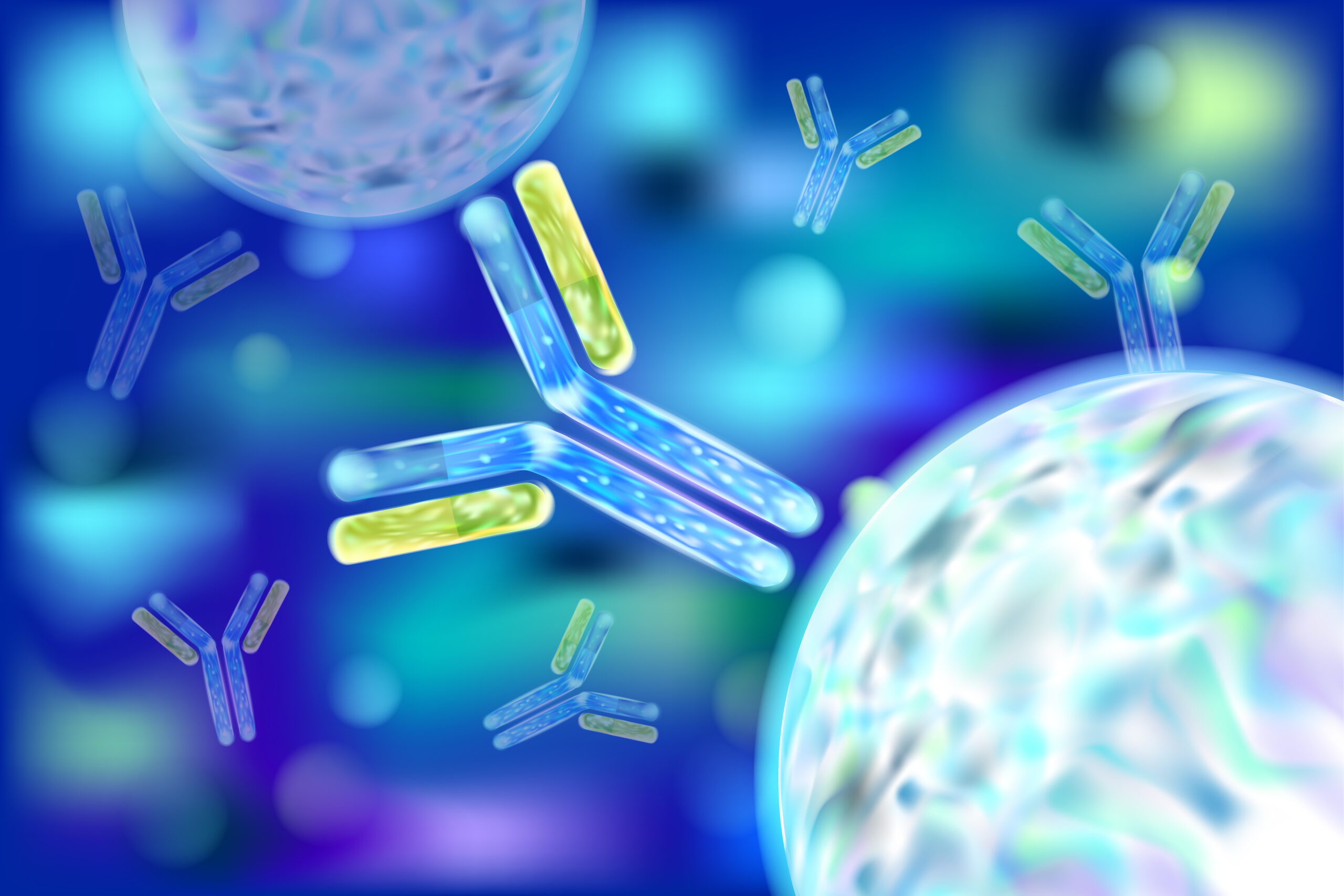LifeArc scientists, in collaboration with Prof. Thomas Worzfeld and Prof. Stefan Offermanns from Marburg University and the Max-Planck-Institute for Heart and Lung Research in Germany, have generated a humanised antibody targeting Plexin-B1 that could be developed into an effective new treatment for osteoporosis, a common bone condition – and multiple sclerosis (MS), an autoimmune disease that targets the brain and spinal cord.
The new antibody, which works differently from all medicines currently approved for osteoporosis and MS, offers the hope of an effective new treatment option for millions of people affected with these chronic illnesses around the world.
The study was published in the Journal of Biological Chemistry in July.
Attractive therapeutic approach
Osteoporosis affects over three million people in the UK and occurs mainly in postmenopausal women. For people affected with the condition, bone is gradually lost– making them fragile and more likely to break. This can cause pain, and disability and make everyday activities extremely difficult. More than 500,000 people will receive hospital treatment every year for bone fractures resulting from osteoporosis.
More than 2.8 million people around the world are currently living with MS. The condition is caused by the body’s immune system mistakenly attacking a protective layer called the myelin sheath that surrounds nerve fibres. This interferes with the transmission of electrical messages between the brain and other parts of the body – leading to a range of symptoms including problems with vision, movement, sensation, or balance.
Although there are a variety of medicines currently available for treating osteoporosis and MS, none of these are fully effective and some can cause serious side effects. There is an urgent need to develop effective treatments to improve the lives of people affected by these debilitating conditions in the UK and around the world.
The semaphorins are a group of molecules that play crucial roles in a variety of cell functions, with most of their effects mediated by other molecules called plexins. Several semaphorins and plexins have been identified as potential targets for drugs to prevent or treat a variety of different diseases, including bone conditions and immunological disorders.
Research has shown that the interaction between Plexin-B1 and semaphorin 4D (Sema4D) can suppress bone formation and promote neuroinflammation in mice. Finding ways to block these molecules from binding could be an effective way to treat osteoporosis and MS.
Humanised anti-Plexin-B1
In this study, the researchers developed an antibody targeting human Plexin-B1 and evaluate its potential therapeutic effectiveness in mouse models of osteoporosis and MS.
“We initially generated a rabbit/human chimeric antibody – RbPLX7 – and showed it binds strongly to human Plexin-B1 and specifically blocks its interaction with Sema4D,” says Dr Arkadiusz Oleksy, Principal Scientist and the leader of this project at LifeArc. “In a series of cell-based experiments, our collaborators – Prof. Thomas Worzfeld and Prof. Stefan Offermanns showed this antibody can prevent Sema4D from suppressing bone formation – demonstrating its potential for treating osteoporosis.”
The team then demonstrated that RbPLX7 had encouraging therapeutic effects in relevant mouse models of postmenopausal osteoporosis and MS – preventing bone loss and improving neurological symptoms, respectively.
LifeArc scientists have extensive experience in using antibody engineering to ‘humanise’ monoclonal antibodies and reduce their likelihood of getting rejected by the body. The approach involves replacing more and more of the rabbit regions with human antibody sequence – until the only remaining parts of rabbit origin are those critical for stability or binding to the target. During this process, a group of humanised antibody candidates are produced and assessed in a range of assays.
“Our humanised antibody – HuPLX7 – has an attractive set of properties, fulfilling preliminary criteria required for it to be developed into a successful treatment. These promising findings warrant its onward preclinical development to further establish it as a therapeutic candidate,” says Dr Arkadiusz Oleksy. “Although it’s early days, we hope that it will ultimately be developed into an effective new treatment for osteoporosis and MS that collectively affect many millions of people in the UK and worldwide. It could also potentially prove useful for treating several other diseases, including certain eye conditions and cancers.”
Dr Oleksy added: “We are very pleased to be part of this exciting research journey and really enjoyed our successful collaboration with Prof. Thomas Worzfeld, Prof. Stefan Offermanns and their team.
Work with us
Find out more about LifeArc’s antibody engineering capabilities – from initial generation to lead candidate – and ways of working with us.
Media contact
Andrew Stewart
Director of Communications



